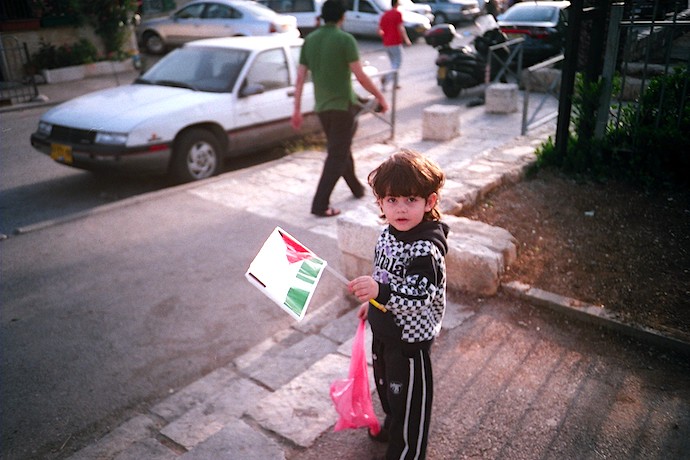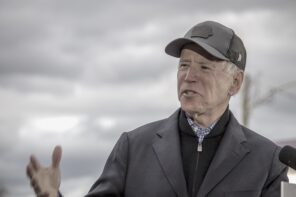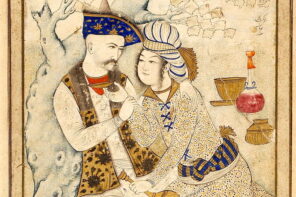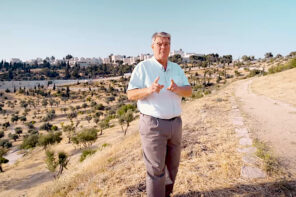For anyone who follows the conflict in Israel/Palestine, the latest conflagration seems all too familiar. Tensions rise in the West Bank, in this case around the Sheikh Jarrah neighborhood in East Jerusalem where the government is considering evicting Arab residents because of a legal claim that Jews originally resided there, thus making that property “Jewish.” This has been going on for decades but has heated up as the government has sent the case to the Israeli Supreme Court, and far-right Parliamentarians have decided to embrace this as a cause. In addition, on Laylat al Qadr, the final day of Ramadan and one of the holiest days in the Muslim calendar, there were riots in the ‘Al Aksa and Haram ‘al Sharif mosques in reaction to the impending Sheikh Jarrah evictions. The Israeli army responded by firing stun guns, rubber bullets, and tear gas on worshippers during their festival. Hamas then saw this as an opening to fire thousands of rockets into Israel. Israel responded with bombs of its own. Each claims the other started it, as if that matters. In short, déjà vu all over again.
But this time there was a new element. Arab riots in Israel proper, in Arab-Jewish towns like Lod, mostly Arab towns such as Akko, and Israeli cities like Haifa, emerged seemingly from nowhere. This then resulted in settlers being bussed to hot spots in order to violently engage Arabs in a kind of macabre Israeli West Side Story. This new element, while not unprecedented, was shocking to many Israelis who believed Arab Israelis (most prefer to be called Palestinian Israelis) were a mostly integrated minority that wouldn’t rebel against the country in which they are citizens. While fragile co-existence prevailed in many of these places, this short-sighted view ignores a much more complicated history of Arabs in Israel since 1948.
This constituency has been the subject of numerous studies, first in English by Ian Lustik in Arabs in the Jewish State: Israel’s Control of a National Minority (1980) and more recently Hillel Cohen’s, Good Arabs: The Israeli Security Agencies and the Israeli Arabs, 1948-1967 (2019 in Hebrew and 2010 in English). Both books and a collection of others in Hebrew, offer extensive analysis of a very problematic relationship. Cohen’s book makes use of recently declassified Israeli and IDF documents and thus broadens and deepens the analysis.
Of course, Benny Morris’ The Birth of the Palestinian Refugee Problem, 1947-1949, first published in 1988, made significant news by debunking many Zionist myths of Palestinian deportations and village liquidations in 1948 (though in his 2004 revised edition he argues that this was justified, even necessary, for the founding of the state). Or as Avi Shavit wrote about the liquidation of the town of Lydda in 1948 in his 2013 New Yorker article, and later in his book My Promised Land, “The truth is that Zionism could not bear the Arab city of Lydda. If Zionism was to exist Lydda could not exist. If Lydda was to exist, Zionism could not exist.”
For most Arab Israelis today that’s where the story begins. Those Arabs who are now citizens of the state of Israel weren’t the ones deported. In some cases, they may have illegally returned and managed to stay. Ben Gurion flatly refused to allow Arab refugees to return to their homes after the War of Independence in 1948 to the chagrin of many Zionists such as Martin Buber. Many now think Ben Gurion’s decision was a tragic mistake.
In 1953 Israel established the Land Acquisitions Act which was the final step in the state acquiring all lands expropriated from Arab landowners who were deemed “absentee,” that is, if they weren’t in residence on their property at a certain date. This included many Arabs who had fled the conflict to other countries but retained ownership of their property, or who’d been living elsewhere inside Israel at the time, in some cases only kilometers from their home and farms. Many Arabs returned to their homes only to find soldiers, or Jewish families, already living there.
Ironically, the “Jewish Question” that helped prompt the emergence of Zionism in Europe suggesting that Jews were “unassimilable” (a notion agreed upon by Europeans and many Zionists as well) now became the “Arab Question” in Israel. The resolution of the first question was the birth of the second. What was Israel as a “Jewish state” to do with a large minority of Arab citizens (Jews only became the majority in what would become Israel in 1947). There were essentially two issues at play: (1) the Arab population and (2) Arab–owned land. The general rule was stated quite explicitly by Mordechai Sharner, the custodian of absentee property in those early years, when he said, “fewer Arabs on less land.”
The Galilee Regional Committee established in 1954 stated as its two principle missions, “strengthening the regime and preventing the consolidation of the Arab minority.” There were all kinds of legal loopholes used to expropriate land, such as rejecting Ottoman deeds or questioning the veracity of other documents. “Fewer Arabs on less land” was the priority; or, as in the case of Sheikh Jarrah and claims that the residences were once owned by Jews and thus should be returned to Jews, even Jews with no relation to the original owners. It doesn’t matter because the land belongs to the Jews.
Of course when Arabs show documentation of houses their families owned before 1948 Jewish residents aren’t required to leave because the Land Act made that property of the state. The process of “Judaizing” the Galilee was a sweeping project that eradicated many Arab villages including, for example, the Israeli town of Kiryat Shemonah, which was built on the demolished Arab village of Khalsa, and more recent attempts to “Judaize” Arab neighborhoods like Silwan in Jerusalem are ongoing. A painful but comprehensive accounting of this phenomenon of de-Arabizing Israel and erasing Arab presence can be found in Meron Benvenisti’s Sacred Landscape: The Buried History of the Holy Land Since 1948, first published in 2000.
In terms of Arab Israeli citizens, they are, as historian Shira Robinson wrote, “citizens of a liberal nation-state and subjects of colonial administration.” They’re fully citizens yet their collective identities are under a constant state of diminution or attempted erasure. As Hillel Cohen notes:
“the aspiration was to reshape Arab consciousness and identity in accordance with the hegemonic Israeli worldview by controlling the society’s political discourse. Israel’s leadership understood that consciousness guides the behavior of individuals. The state’s goal was to detach the Palestinian Arabs in Israel from the Palestinian Arab identity that was so central for many of them to create something new – the Israeli Arab…Through its loyalists, the state sought to indoctrinate Arab schoolchildren with the Zionist narrative…to promote obedience to the authorities, and to challenge non-Israeli national identities.”
Cohen shows that while there were some real successes in that area, the project mostly failed, and the half century occupation of individuals, many of whom are relatives of these Arab Israelis, eroded that assimilatory project even more. Thus, many of these individuals prefer “Palestinian Israelis” to “Arab Israelis,” in solidarity with the Palestinian cause.
For the Jewish project of making “Israeli Arabs” work, Israel had to cultivate a “class of collaborators,” individual Arabs who would essentially spy on their neighbors, and even their own families, to provide information about illegal activities, infiltrators, smuggling etc. These collaborators were awarded with preferential treatment by the government such as gun licenses, housing permits, lucrative jobs, and loans. The point more generally was to quell any semblance of national sentiment among the Arab minority while also not quite integrating them fully into Israeli society. Let us remember this isn’t like the American cultivation of “collaborators” in Vietnam. This is a program to cultivate citizens to spy on fellow citizens. It’s closer to McCarthy’s anti-communism program in America in the 1950s.
It’s certainly true that some Arab Israelis broke the glass ceiling and became prominent figures, like doctors, lawyers, judges, architects, businessmen, academics and parliamentarians. And that’s as it should be. But the majority of Arabs living in what’s known as the Arab Triangle in the north do not enjoy the same benefits of citizenship as their Jewish compatriots.
Here Cohen articulates why Israel’s project of integration has failed and this will perhaps speak to the rise of what we’re seeing in this recent Arab Israeli insurgency:
“Indeed creating this new Israeli Arab identity was one of the state’s tacit goals…But on a more fundamental level it turned out to be problematic because of the state’s inability (and unwillingness) to create a common ethos and narrative…Since it found no way to integrate the two conceptions, the state simply disregarded the Palestinian narrative, the Arab population’s aspirations, and Palestinian history. These elements made no appearance in the Israeli curricula produced for Arab schools (let alone Jewish ones)…Also silenced were voices that sought to revive Palestinian heritage, connect the younger generation with the Palestinian movement, and recount the events of the Nakba.”
The problem is that Lydda could not be erased from Arab Israeli history, nor could the massacre of Kafr Qasim on October 29, 1956 when Israeli border police murdered 46 Arab workers coming from the fields after a curfew they never knew existed. This is because these weren’t simply events. They’re part of the very lives of these communities and continue to be so.
As Peter Beinart argues in his recent essay “Teshuva: A Jewish Case for Palestinian Refugee Return,” how is it that Jews, who base their very identities on remembering tragic events, many that happened millennia ago, expect Arab Israelis to “forget” Lydda, or deny the Nakba, that occurred in the lifetimes of many of these people? Jews come back to their homeland they haven’t inhabited in 1,500 years while Arabs still hold the actual keys to property that’s now owned by the state that denies their right to reside there.
The reason, I think, goes back to Avi Shavit’s remark, “If Zionism was to exist Lydda could not exist. If Lydda was to exist, Zionism could not exist.” Or as a Zionist once defined Zionism, “Zionism is like a man jumping out of the third story of a burning building. And landing on someone’s head.” Zionism cannot easily integrate a narrative of its own failings and realize that its national narrative cannot easily be adopted by those who are not part of its collective, yet must reside under its premises. And so the “Arab Question” is solved by erasing the Arab narrative to make way for a cleansed Israeli/Zionist one. Now it’s true that, as is often said, “the victors get to write the history.” But that doesn’t mean all will accept it. As Arab Israeli Parliamentarian Ahmed Tibi once said, how can a population integrate into a country whose national anthem ignores, even denies, their very existence?
In large part, Arab success in Israel required being a “good Arab.” In many cases that meant being a collaborator of some sort. In other cases, it meant sacrificing one’s national consciousness to be second-class citizens in a democracy—a “Jewish” democracy. Citizens, yes, with full citizen rights, but also culturally colonized. For many, the price was worth it, they concluded they would fare better in Israel than elsewhere. And many were right.
But as Zionists know well, national consciousness may sometimes sleep but it rarely dies. After fifty years of watching their relatives suffer the humiliation of occupation, experiencing governments, right and left, chip away at their livelihoods by denying them building rights, by expropriating land and housing, and by enabling the “Judaizing” of neighborhoods such as Sheikh Jarrah and Silwan, perhaps a sleeping giant has awoken. Palestinians under occupation have many claims against Israel, and many Jews in Israel acknowledge that something has to be done to resolve the conflict. But Arab Israelis are Israelis. When they rebel it’s a different story. One can’t easily send in the army against one’s own citizens. One can’t put them under military law when they live amongst a Jewish population. What’s new in 2021 is the emerging political consciousness of Arab Israelis in their quest for recognition, rights, and controlling their own narrative that Israel has tried for decades to erase.
Hope is not lost. As riots rage and hatred flares, there are Israeli Jews and Arabs, hundreds, maybe thousands, talking, embracing, and exchanging flowers. Human empathy can sometimes cut through discriminatory policies. But those policies remain and while empathy may be a salve it’s not a cure.
Hopefully, this troubling Arab Israeli insurrection will make the powers in Israel recognize that the occupation is not the only problem. The problem is the now century-old “Arab Question” that has never been resolved and now needs serious attention. Since Zionism created the “Arab Question,” in some way, the problem is Zionism itself.





